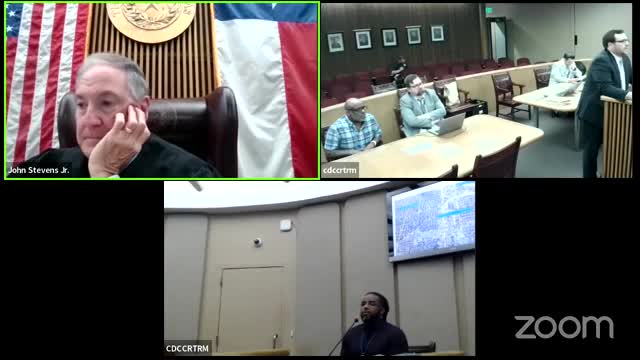Detective reveals secrets behind photo lineup procedures
August 21, 2024 | Jefferson County District Court, District Court Judges, Judicial, Texas
This article was created by AI summarizing key points discussed. AI makes mistakes, so for full details and context, please refer to the video of the full meeting. Please report any errors so we can fix them. Report an error »

In a recent government meeting, discussions centered around the procedures for administering photo lineups in criminal investigations, particularly in relation to a robbery case. Key points emerged regarding the importance of minimizing bias during the identification process.
A witness in the robbery case was interviewed about her recollections, confirming that her memory aligned with the security footage. However, she noted that the suspect instructed her to look away, which raised questions about the reliability of her identification. The investigator clarified that he did not conduct the photo lineup to avoid any potential bias, adhering to departmental policy that mandates an impartial approach.
Detective Rayner was called in to administer the photo lineup, which is generated by first identifying a potential suspect and then compiling a set of six photographs that resemble the suspect. The process involves both manual selection and the use of computer software to ensure that the additional photos share similar characteristics with the suspect.
The detective emphasized that the lineup is not presented in a fixed order, as it is randomized to prevent any influence on the witness's decision. Each lineup is meticulously documented, including the time and date it was administered, ensuring transparency and accountability in the identification process.
This meeting highlighted the critical nature of procedural integrity in law enforcement, particularly in sensitive cases where eyewitness testimony can significantly impact the outcome of investigations.
A witness in the robbery case was interviewed about her recollections, confirming that her memory aligned with the security footage. However, she noted that the suspect instructed her to look away, which raised questions about the reliability of her identification. The investigator clarified that he did not conduct the photo lineup to avoid any potential bias, adhering to departmental policy that mandates an impartial approach.
Detective Rayner was called in to administer the photo lineup, which is generated by first identifying a potential suspect and then compiling a set of six photographs that resemble the suspect. The process involves both manual selection and the use of computer software to ensure that the additional photos share similar characteristics with the suspect.
The detective emphasized that the lineup is not presented in a fixed order, as it is randomized to prevent any influence on the witness's decision. Each lineup is meticulously documented, including the time and date it was administered, ensuring transparency and accountability in the identification process.
This meeting highlighted the critical nature of procedural integrity in law enforcement, particularly in sensitive cases where eyewitness testimony can significantly impact the outcome of investigations.
View full meeting
This article is based on a recent meeting—watch the full video and explore the complete transcript for deeper insights into the discussion.
View full meeting
